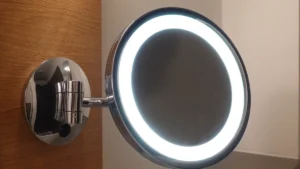
When picking LED strip lights, it’s important to know the difference between constant voltage and constant current types. Constant voltage LED strip lights use a set voltage, usually 12V or 24V, to give steady power along the strip. On the other hand, constant current LED strip lights keep the current stable, measured in milliamps, to stop changes and keep the brightness even.
This difference is important because it impacts how they work, fit, and last. By understanding these systems, you can choose the right LED strip lights for your needs, whether for home decoration, business projects, or special uses.
Key Takeaways
Know the difference: Constant voltage LED strips use steady voltage. Constant current strips keep the current stable. Pick based on your project needs.
Constant voltage strips are simple to set up and cheaper. They are great for home and decorative lighting projects.
Constant current strips give even light and stop overheating. They work well for professional or high-power lighting jobs.
Think about setup needs: Constant voltage systems are more flexible. Constant current systems need exact matching with the LED strip.
Plan your project well. Understanding your lighting goals and space helps you choose the best LED strip for good results.
What Are Constant Voltage LED Strip Lights?

Definition
Constant voltage LED strip lights work with a set voltage, like 12V or 24V. This voltage depends on how the LEDs and parts are arranged. For instance, three 3-volt LEDs in a row need 9 volts. Adding a resistor increases the total to 12 volts. Similarly, six 3-volt LEDs need 18 volts, plus extra for resistors, making 24 volts. These lights use LED drivers to keep the voltage steady. This ensures they work well without needing constant current control.
How They Work
Constant voltage LED strip lights use a driver to give a fixed voltage. The LEDs are lined up with resistors that limit the current. This setup keeps the current steady, even if the voltage changes slightly. It’s simple to use and install. You just connect the strip to a matching LED driver, like 12V or 24V. The resistors built into the strip manage the current, so the LEDs work smoothly without extra parts.
Feature | Constant Current Driver | Constant Voltage Driver |
|---|---|---|
Current | Stays the same | Changes |
Voltage | Changes | Stays the same |
Common Applications
Constant voltage LED strip lights are common in homes and businesses. They’re great for soft lighting, like under cabinets or in living rooms. They also work well in gypsum board designs, adding extra light to show off shapes. In shops or offices, they’re used for simple lighting because they’re easy to set up and affordable. Their flexibility and ease of use make them a favourite for many lighting projects.
Advantages
Constant voltage LED strip lights have many good points. These include:
If one light stops working, others keep shining. This makes them reliable for long-term use.
They are easy to set up. You can link several lights together, allowing creative designs.
They save money, especially for big projects. These lights cost less than other types.
Many engineers like this technology. It’s simple and works with common power supplies.
Few models, like 12V and 24V, make choosing easier. This standardisation helps you pick the right one quickly.
These benefits make constant voltage LED strip lights great for homes and businesses. They are cheap and simple, making them a popular choice for lighting.
Disadvantages
Even with their benefits, constant voltage LED strip lights have some downsides. These are:
Extra parts are needed to control current changes. This can waste energy over time.
Too much current can harm the LEDs, shortening their life. This may lead to higher repair costs later.
They are less energy-efficient, giving fewer lumens per watt.
Voltage drops along the strip can make lights dimmer. This causes uneven brightness, especially in long strips.
Colours may not match because different LEDs need different voltages. This can make the light look uneven.
Lower voltage can stress the LEDs, wearing them out faster.
While these lights are useful and affordable, these issues show why careful planning and setup are important. This helps them last longer and work better.
What Are Constant Current LED Strip Lights?
Definition
Constant current LED strip lights keep the current steady in the circuit. Unlike constant voltage lights, they use a special driver to control the current. This driver changes the voltage to keep the current stable. It works even if things like temperature or load change. This is important to stop problems like overheating, which can harm the LEDs. The driver’s output is measured in milliamps (mA) or amps (A). It also has a voltage range to handle different loads.
How They Work
These lights use a driver to keep the current steady. The driver checks the circuit and adjusts the voltage as needed. For example, if the LEDs heat up and resistance drops, the driver lowers the voltage. This stops the LEDs from overheating or burning out. These systems are great for high-power lighting. They keep the brightness even and make sure all LEDs work well.
💡 Tip: Use a constant current driver for steady light and long-lasting LEDs. It stops changes that could damage your LED strip lights.
Common Applications
Constant current LED strip lights are used in powerful lighting setups. They are perfect for architectural lighting, where even brightness and colour are key. These lights are also great for signs and decorations, giving smooth light across the strip. They work well in places needing good heat control and energy saving. This makes them reliable and long-lasting for professional use.
Advantages
Constant current LED strip lights have many useful benefits. They keep the brightness even across the whole strip. This gives smooth and uniform lighting, perfect for professional uses like signs or building designs.
Another big advantage is their protection against overheating. When LEDs get hot, they can draw too much current and get damaged. Constant current drivers stop this by adjusting the voltage to keep the current steady. This helps the LEDs last longer and work better over time.
These lights are great for high-power lighting needs. They are efficient and reliable, making them ideal for big projects or commercial spaces. They provide strong performance while saving energy.
Also, these lights can handle changes in temperature and load. This makes them good for outdoor use or places with changing conditions. They give steady light no matter the environment.
Key Differences Between Constant Voltage and Constant Current LED Strip Lights

Power Regulation
Power control is a key difference between these two systems. Constant current systems keep the current steady by changing the voltage. This stops overheating, which can damage LEDs. On the other hand, constant voltage systems give a fixed voltage. The current changes depending on the load. This design keeps brightness even but needs resistors to stop damage.
Feature | Constant Current Driver | Constant Voltage Driver |
|---|---|---|
Current Regulation | Keeps current steady, adjusts voltage | Keeps voltage steady, adjusts current |
Efficiency | Protects LEDs, lasts longer | Cheaper and simpler technology |
Control Precision | Ensures even brightness | Easier to manage voltage |
Constant current systems are best for bright, long-lasting lighting. Constant voltage systems are cheaper and good for simple setups.
Installation and Compatibility
Setting up these systems is quite different. Constant current drivers need to match the LED strip exactly. This is because the driver changes voltage to keep the current steady. If mismatched, it may not work well. In contrast, constant voltage drivers are easier to install. They provide steady voltage and work with many LED strips.
Tip: If you’re new to LED setups, choose constant voltage systems. They are simpler to install and use.
Your choice affects how easy it is to install and what power supplies you can use. Constant voltage systems are more flexible, while constant current systems need careful planning.
Performance and Use Cases
The performance and uses of these systems vary. Constant current systems are great for powerful lighting, like in buildings or streets. They keep brightness steady and last longer, making them good for tough jobs. Constant voltage systems are better for decoration, like signs or stage lights. They cost less and work well for smaller projects.
Constant Voltage | Constant Current |
|---|---|
Current changes, voltage steady | Voltage changes, current steady |
Needs resistors | Has built-in regulator |
Costs less | Costs more |
For small projects | For big projects |
Shorter lifespan | Longer lifespan |
Think about your project’s needs when choosing. For professional lighting, pick constant current systems. For simple, budget-friendly setups, go with constant voltage systems.
How to Choose the Right LED Strip Light for Your Needs
Factors to Consider
Picking the right LED strip lights needs careful thought. First, decide your lighting goals. For businesses, think about each area’s needs. For example, hotels need a Colour Rendering Index (CRI) over 90. This helps show colours correctly and looks natural.
Voltage is also important. Most LED strips use 12V or 24V DC. Smaller setups often use 12V, while bigger ones prefer 24V. But, long strips can lose voltage, making lights dim or colours uneven. To fix this, use thicker wires to keep brightness steady.
Think about where you’ll install the lights. Outdoor or hot places need strips that handle heat and weather well. Knowing these things helps you pick the best LED driver and strip lights for your project.
Ideal Scenarios for Constant Voltage LED Strip Lights
Constant voltage LED strips are simple and flexible. They’re great for setups with many LEDs in parallel. For example, under-cabinet lights or home decorations are easy to install and affordable. These strips have built-in parts to control current, keeping them steady with a fixed voltage like 12V DC.
If current changes could cause problems, constant voltage strips are stable. They stop uneven brightness or damage if a strip is cut. This makes them a good choice for cheap and easy projects.
Scenario Description | Explanation |
|---|---|
Multiple LEDs in Parallel | Works well and avoids current problems in parallel setups. |
Risk of Current Fluctuation | Stops damage if cutting increases current in other strips. |
Built-in Circuitry Regulation | Runs smoothly with fixed voltage due to built-in current control. |
Ideal Scenarios for Constant Current LED Strip Lights
Constant current LED strips are best for strong, professional lighting. They keep current steady, stopping overheating or damage to LEDs. This makes them perfect for building lights needing even brightness and colour.
They’re also good for places with changing temperatures or loads. Outdoor or factory setups benefit from their ability to handle tough conditions. Using a constant current driver keeps your lights working well and lasting longer.
For projects needing exact light and long life, constant current strips are better. They give even light and protect LEDs from heat, making them great for big or professional jobs.
Knowing the difference between constant voltage and constant current LED strip lights is important. Constant current systems keep the current steady, while constant voltage systems use a fixed voltage. Each type works best for different uses, as shown below:
Feature | Constant Current | Constant Voltage |
|---|---|---|
Current/Voltage Behaviour | Steady current, changing voltage | Steady voltage, changing current |
anwendung | Bright lighting | Signs, LED strips, stage lights |
Installation Cost | Usually more expensive | Often cheaper, especially in large amounts |
Choosing the right type depends on your project’s needs. For bright, even lighting, constant current systems are better. For simple and budget-friendly setups, constant voltage systems are ideal. Using the correct LED driver with your system helps it work well and last longer.
FAQ
What is the lifespan difference between constant voltage and constant current LED strip lights?
Constant current LED strips last longer than constant voltage ones. Their drivers stop overheating and keep the current steady. This reduces wear on the LEDs. Constant voltage strips may have uneven current, which can shorten their lifespan.
Can you mix constant voltage and constant current LED strip lights in one setup?
No, you cannot mix these two types of LED strips. Each needs its own specific driver to work properly. Mixing them can cause problems or damage the LEDs. Always use the right driver for each type of strip.
Are constant current LED strip lights more expensive than constant voltage ones?
Yes, constant current LED strips cost more than constant voltage ones. They have advanced drivers that control current better. This makes them last longer and use less energy. They are worth it for big or professional projects.
Do constant voltage LED strip lights work well for long installations?
Constant voltage strips can lose power over long distances. This makes the lights dimmer in some areas. To fix this, use shorter strips, thicker wires, or power injectors. For very long setups, constant current strips work better.
How do you choose the right driver for your LED strip lights?
Pick a driver that matches your LED strip type. For constant voltage strips, use a driver with the same voltage, like 12V or 24V. For constant current strips, choose a driver with the right current, like 350mA, and a matching voltage range.
See Also
Understanding COB LED Strips: Functionality Explained
Comparing COB And SMD LED Strips: Uses And Differences
Selecting The Perfect LED Strip Lights For Linear Lighting



